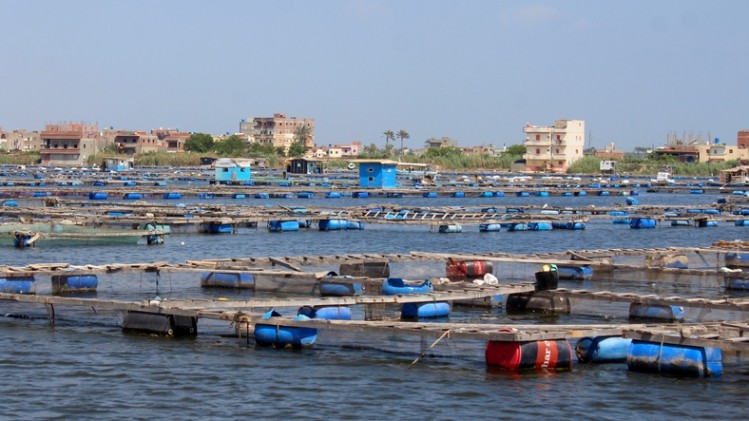Egypt sees massive investment, expansion in aqua feed production

And the study, which was conducted with the financial support of the EU and under the auspices of the European Bank for Reconstruction and Development (EBRD), suggested the aqua feed industry acts as a critical development driver along the entire Egyptian aquaculture value chain.
Published in Aquaculture and including the input of industry stalwart, Malcolm Dickson, the paper analyzed the competitiveness of the aqua feed subsector in Egypt, comparing its performance in 2018 with the results from an earlier study based on 2013 data.
The current situation, the market and regulatory environment, key risks and potential mitigation measures were all assessed.
The aquaculture industry in Egypt has been expanding rapidly over the past three decades, with the growth, said the authors, stemming from investments made in the 1980s when aquaculture was prioritized as a strategically important industry.
There has been significant investment in the aqua feed subsector, resulting in increased capacity, which has led to increasing competition in the market, they found.
In the medium to long-term, the prospects for further growth of the aquaculture and aqua feed industries in Egypt are positive, said the team, with opportunities for exports of aqua feeds to other countries in Africa and to markets in the Middle East.
“Both domestic and international markets for fish and aqua feeds are growing and have potential for further growth.”
But the investment in aqua feed production has not been matched in the rest of the value chain where there is an urgent need to modernize and upgrade systems and practices, they said.
Methodology
The authors outlined how quantitative and qualitative data were collected through a desk review of existing information on the sector.
That work was followed by a structured questionnaire that was drafted and distributed to a targeted number of fish feed mills, representing large-scale, medium-scale and small-scale companies, covering different geographical and production regions.
Increase in number of feed mills
The results of the research revealed that the Egyptian aqua feed subsector faced dramatic changes over the five year period from 2013 to 2018. The number of feed mills increased by 67% from an estimated 60 mills in 2013 to around 100 mills in 2018.
“As a result, Egyptian aquafeed production increased over 77%, from an estimated 800,000 mt to 1,419,000 mt over the same time period.”
That tonnage equates to around €600m (US$677.5m) in value on an annual basis.
“If growth continues at the same rate as the global industry, production could reach 2.2m mt per year by 2025.”
Foreign companies that have invested in Egyptian aqua feed subsidiaries or joint-ventures to date including Aller Aqua, Skretting, New Hope and De Heus.
Such international companies often have advantages of global sourcing, economies of scale, reputation and research support, commented the authors.
The Egyptian fish feed sector is dominated by medium-scale (42.6%) and small-scale (33.3%) milling businesses.
There is one large-scale mill - over 100,000 mt per year with turnover greater €50m, employing more than 250 staff - and 19 medium-scale mills - over 20,000 mt per year, with turnover at €10–50m, and fewer than 250 permanent employees - in Egypt.
Those medium scale mills, with total annual output of 605,000 mt, represented 42.63% of overall aquaculture feed production in 2018, found the team.
Competitiveness
The study demonstrates the need for feed companies to improve production efficiency to be able to be competitive in the market, with the paper noting the outdated equipment used in many small-scale mills.
The authors anticipate that inefficient, smaller companies will eventually drop out of the Egyptian aqua feed market, leaving a sector with fewer, but larger companies.
They suggested that “forward-looking” aqua feed companies could enhance their efficiency through investing new equipment, staff training, bulk distribution of feeds, or through better technical support as well as by facilitating investment in other value chain actors.
Raw material sourcing
The Egyptian feed mills source their feed raw materials and feed additives either from local producers or through importers (El-Sayed et al., 2015).
Specialist feed processing machinery is also imported, although some components, such as bins and buildings are fabricated locally, according to the findings.
The largest cost item is feed raw materials.
“In a medium-sized feed mill producing 20,000 mt year this comes to around US$8m while a large-scale mill might spend US$32m on feed materials.”
Larger feed mills and multinational companies can also carry out direct sourcing of raw materials whereas smaller feed mills have to source from agents or middle-men for their raw materials and additives.
Coordinating body needed
The aquaculture sector in Egypt, stressed the authors, is not well supported by current representative organizations and urgently needs an effective body that can help to coordinate and conduct generic marketing of farmed fish.
“In the absence of leadership from current organizations, aquafeed companies could facilitate a process to develop this body which could be funded either by direct contributions from participating companies or through a levy on feed sales.”
Source: Aquaculture
DOI: https://doi.org/10.1016/j.aquaculture.2021.737486
Title: Analysis of aquafeed sector competitiveness in Egypt
Authors: AFM El-Sayed, AM Nasr-Allah, M Dickson, C Gilmour







